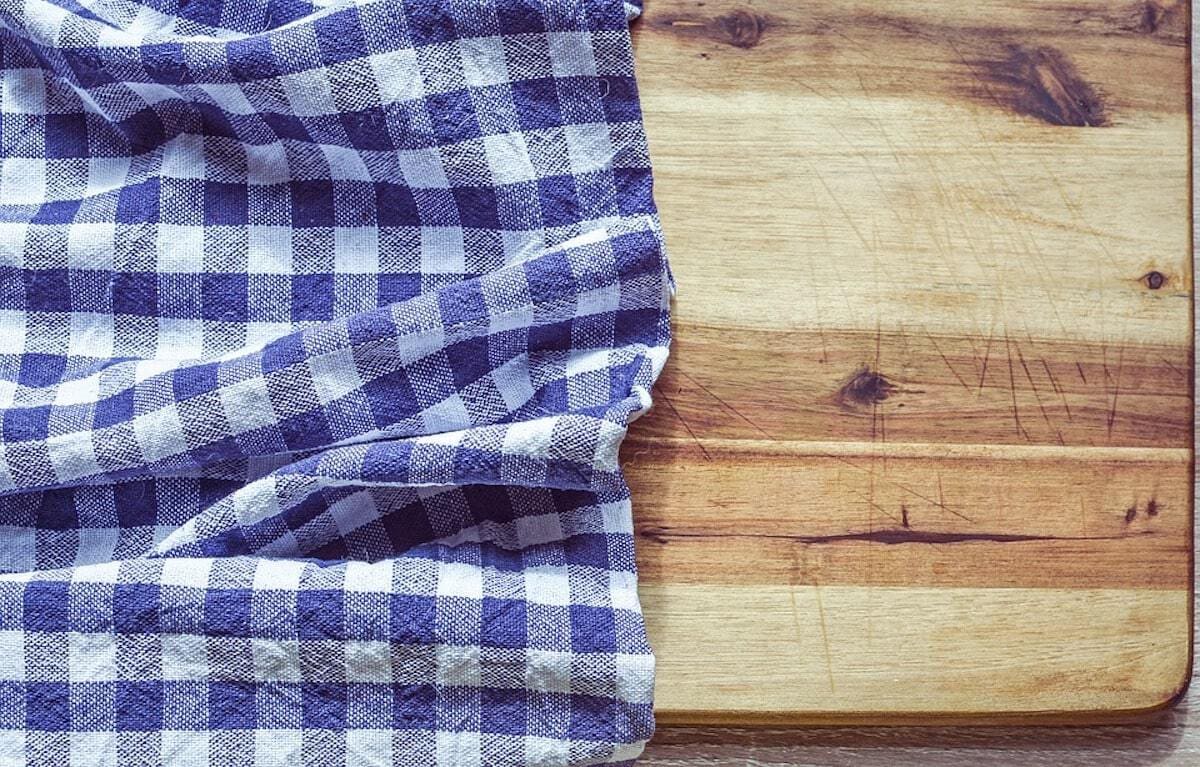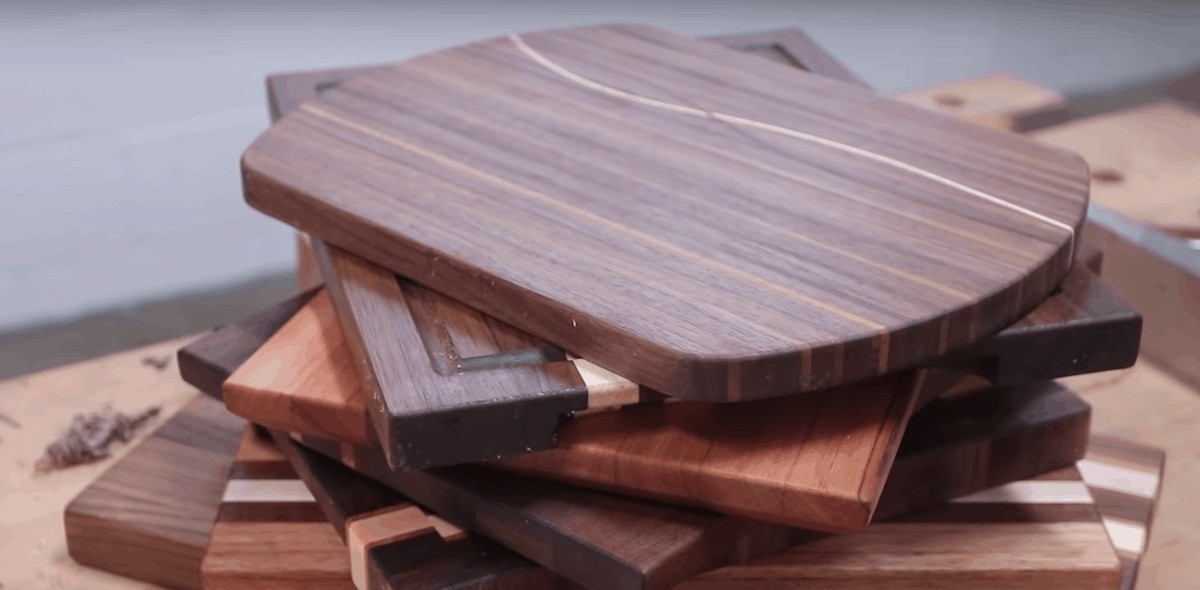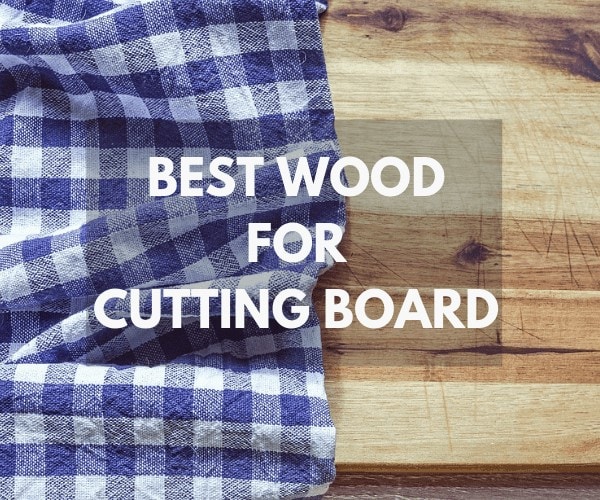
No kitchen is complete without a beautiful butcher block cutting board. Both functional and attractive, these cutting boards are at home in any kitchen, regardless of style. Here is an example of a premium Black Walnut board.
Best of all, making your own is a fun and easy project to tackle when you have a free weekend; you won’t need much more than a circular saw, some wood glue, and clamps.
Today, we’ll cover everything you need to know to select the best wood for cutting boards.
What to Look for in Wood
When it comes to the best wood for a cutting board, there are a few characteristics you’ll want to keep in mind when evaluating your different options.
Wood Hardness
Arguably the most crucial factor to consider is how hard the wood is. As a general rule, the harder the wood, the better it will be. Wood hardness shows on the Janka Hardness Scale, and the higher the rating, the harder the wood. Woods with over 1,000 lbs on the Janka Hardness Scale are best for use as cutting boards.
Porosity
An equally important factor to consider is how porous the wood is. Like your skin, wood has pores, and some species have larger, more noticeable pores than others.
Wood with large pores provides a home for bacteria to grow inside your cutting board, which is not what we’re looking for. Porous woods also allow liquids to seep into the cutting board, which can lead to warping.
Wood species with tiny pores are much better for cutting boards since they’re much harder for bacteria and liquids to penetrate.
Toxicity
Wood can be very hard and non-porous but still not make a good choice for a cutting board. Stick with woods from trees that produce edible fruit or sap. Woods that do not may be toxic to humans.
Purpleheart is a great example. This wood is beautiful, hard, and has small pores. On the surface, you’d think it would be perfect to use. But, the wood contains toxins which can easily leach out into any food you place onto the cutting board.
Other Factors to Consider
Beyond the characteristics that make or break a particular type of wood for cutting board use, there are a few different factors that will also be important as you consider which wood is best for your cutting board.
Conditioning
You should condition wood cutting boards to keep them in top shape. Wood tends to shrink or warp as the ambient humidity increases or decreases. Food-grade mineral oil helps to prevent that from happening, and it should be done regularly to prolong the life of your cutting board.
Most wood that’s suitable for cutting board use should be conditioned quarterly, but some woods tend to shrink or warp more than others. If the wood you choose is prone to shrinkage or warping, you’ll want to condition the board monthly or bi-monthly.
Cost
Depending on the wood you choose, you’ll find that the cost of materials can swing widely, especially if you’re using several different types of wood for a single cutting board.
The same goes for store-bought cutting boards, which can get quite expensive depending on how ornate the pattern is as well as the type of wood used in construction.
Thankfully, one of the best cutting boards woods is also the most affordable. North American rock maple, also known as sugar maple is an excellent choice as a cutting board wood.
Grain Patterns
There are two different ways to build or buy a wood cutting board: end-grain and edge-grain.
End grain cutting boards showcase the cross-cut grain of the wood, like the end of a 2×4. End cuts are more fibrous and softer than edge cuts, so they’re more forgiving on knife edges. They also feature an open-cell structure that can heal itself from small cuts and dings that are bound to occur over the life of your cutting board.
End grain boards are usually significantly more expensive than their edge grain cousins for these reasons.
Edge grain boards showcase the rip-cut grain of the wood, like the top or bottom of a 2×4. This cut produces a harder, more stable board. However, edge grain boards are harder, so they’ll dull your knives quicker. They are also less able to self heal from cuts and dings.

Best Kinds of Wood for Cutting Boards
Based on the different criteria we’ve discussed above, some woods make a better choice than others. There are also other woods beyond these basics that make a great choice.
Any wood that’s hard, non-porous, and non-toxic will make a solid choice for your wood cutting board.
Maple
Any kind of maple makes an excellent choice for cutting boards, chiefly North American rock maple. North American rock maple measures 1,450 lbf on the Janka scale, which is exceptionally hard. This species is highly scratch and dent resistant, but it’s also not so hard that it will prematurely dull your knives.
This wood is also non-porous, which helps to inhibit warping and bacteria growth. However, maple is prone to shrinkage as humidity changes, so it needs to be conditioned more than other types of wood.
Maple also possesses a light blonde color, so while it doesn’t stain as easily as more porous woods; when it does stain it’s more visible.
Thanks to its hardness, small pores, and affordable price, Maple is an ideal choice. The light blonde color also offers plenty of contrast when paired with other, darker woods.
Beech
Beech is another popular wood for use in a cutting board. Like maple, beech is hard and has closed pores. It measures 1,300 lbf on the Janka scale, so while it’s less hard than maple, it’s also less damaging to your knife’s edge.
Its porosity is similar to Maple, so it does a great job of warding off bacteria and moisture. It’s also similar in color, and most beech has a light pink tint to it. While it’s less than ideal from a stain perspective, it makes another attractive choice if you’re using two or more woods to build your cutting board.
One thing to keep in mind with beech is that it’s the most sensitive cutting board wood when it comes to warping or shrinking due to humidity changes. As a result, you’ll want to condition a beech cutting board monthly to prolong its life.
Teak
Teak is a tropical hardwood, and it boasts a beautiful, exotic look that few other kinds of wood can compete with.
Teak measures 1,070 lbf on the Janka scale, so it’s significantly less hard than maple or beech. But, the high silica content of this wood dulls knives more easily. Even though the wood is softer, it will still dull your knives as a harder wood will.
This wood also has open pores, so you’ll need to take extra care when cleaning the board as it’s easier for bacteria to survive on a teak cutting board.
Teak isn’t as vulnerable to humidity changes, so it doesn’t need to be conditioned as often as some other woods. The beautiful orange-brown hue of this wood does a great job at hiding stains, and it offers plenty of contrast when paired with another wood to create a pattern.
Walnut
Arguably the most popular dark wood that’s used to make cutting boards is Walnut. It’s softer than any of the woods we’ve discussed thus far, but it has some other more desirable characteristics that make it a smart choice as wood for a cutting board.
I did find high quality handmade walnut cutting boards made by Artisan Born, you can check them out here Black Walnut Wood Cutting Board, Solid Walnut Live Edge Cutting Board, and Live Edge Walnut Slab Cutting Board. These are great examples of amazing wood grain and quality craftsmanship.
Walnut measures 1,010 lbf on the Janka scale, so it’s more prone to knife marks and dents than other wood types. But, it also won’t dull your knife as quickly as the other three kinds of wood we’ve discussed.
As a closed-grain hardwood, walnut does a great job of resisting bacteria and keeping liquids out of the wood. It’s also less prone to shrinkage or warping than other woods, so it only needs to be conditioned quarterly, or bi-annually.
Walnut also possesses a rich, espresso-brown hue, which is very resistant to stains. If you’re looking to achieve an expensive and high-end look with your cutting board, walnut is an ideal choice.
Final Word
There are several solid options that fit the bill. Wood like maple or beech makes a great choice, as they’re hard and feature a closed grain with microscopic pores. Darker woods, such as teak or walnut also make a fine choice for a cutting board, and their rich color helps mask the appearance of stains.
Most people combine two or more of these woods to create a beautiful design without having to sacrifice the integrity of the cutting board because of the characteristics of different wood.
Keep in mind that there are plenty of hardwoods, both domestic and exotic, that you can use. Provided that the wood is hard, non-porous, and non-toxic, it can be used in your new cutting board.
Once you’ve selected the wood you’d like to use, check out our tutorial on building your own cutting board. Or, if you’d rather eliminate the guesswork of selecting materials yourself, check out our build-your-own live edge cutting board kit.

